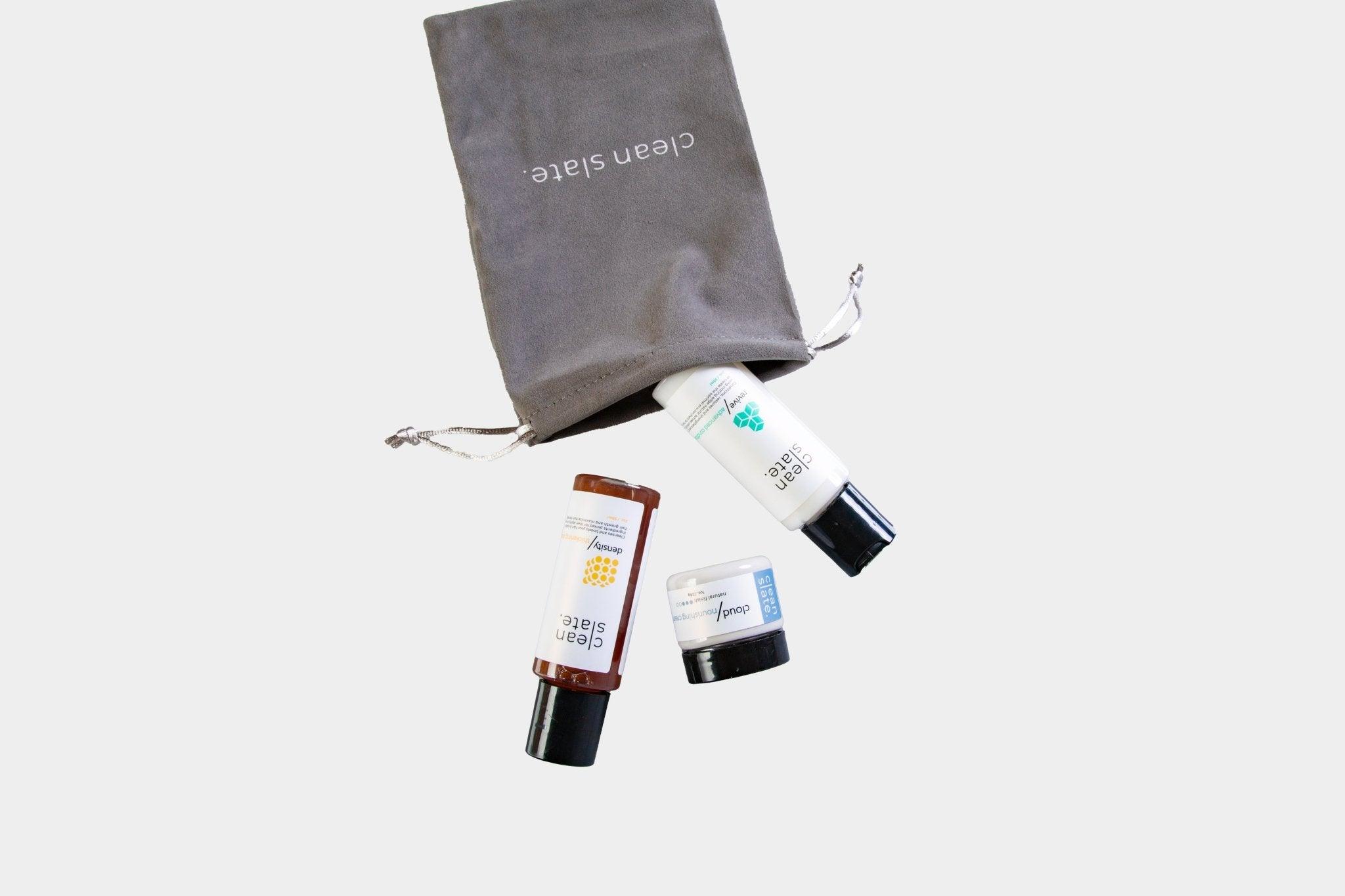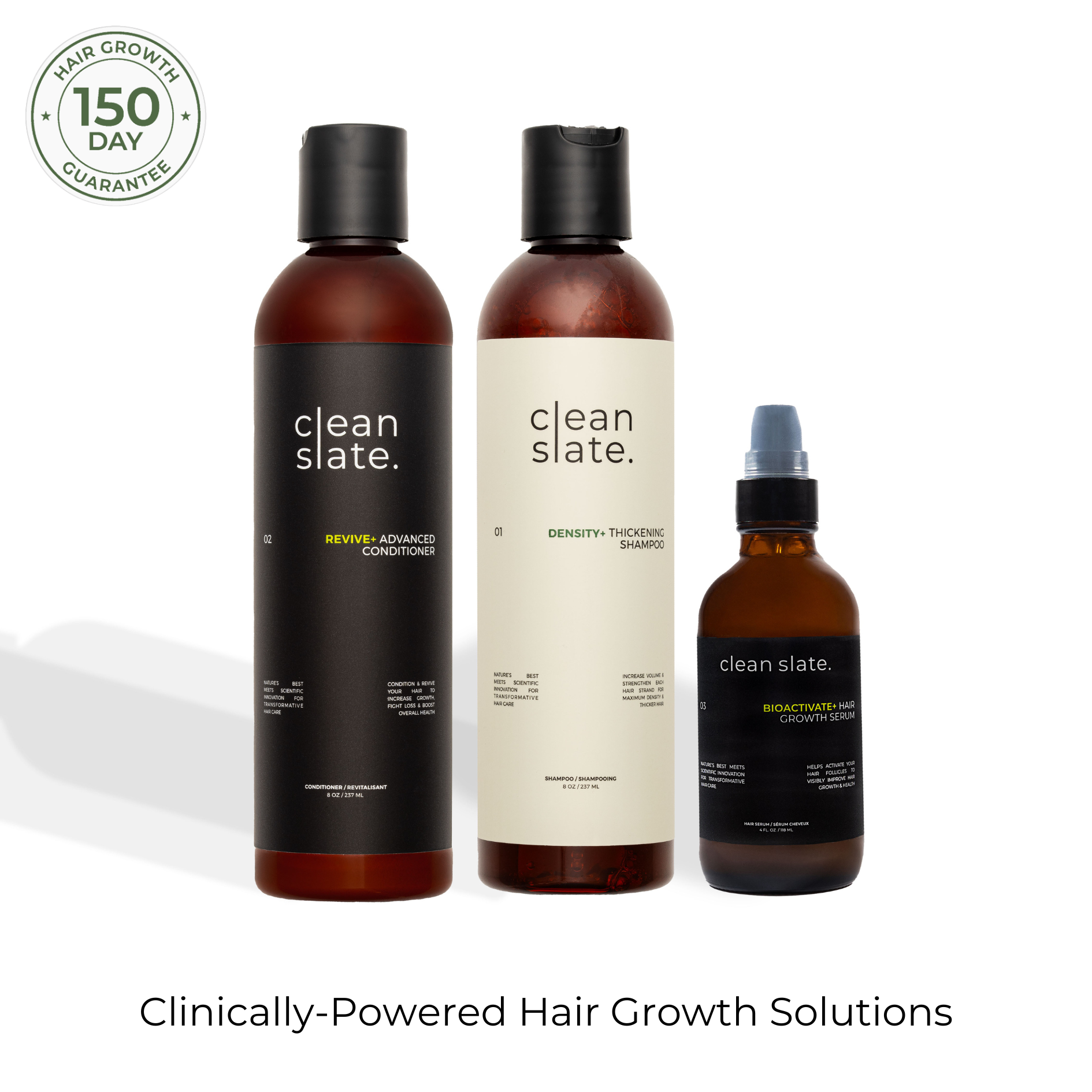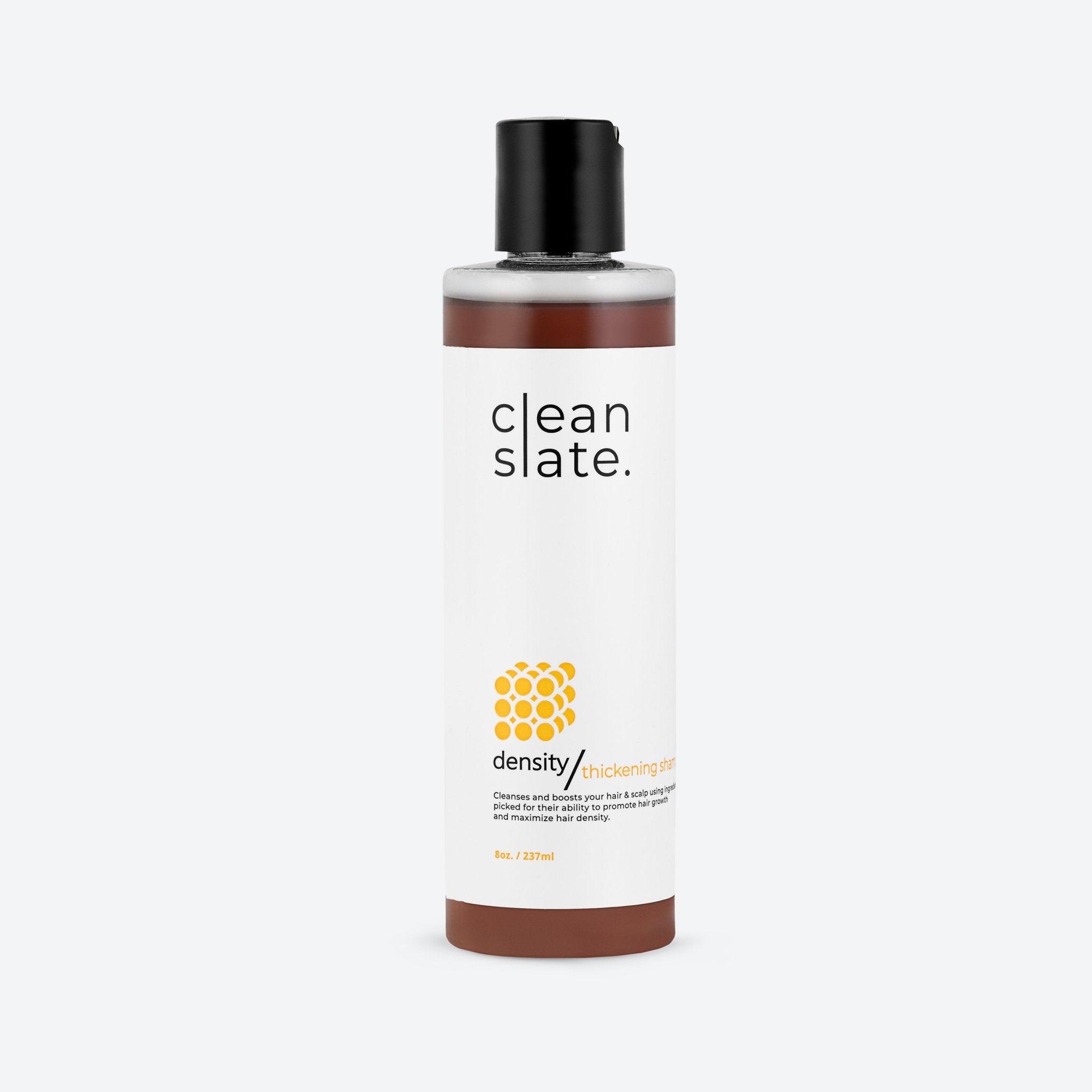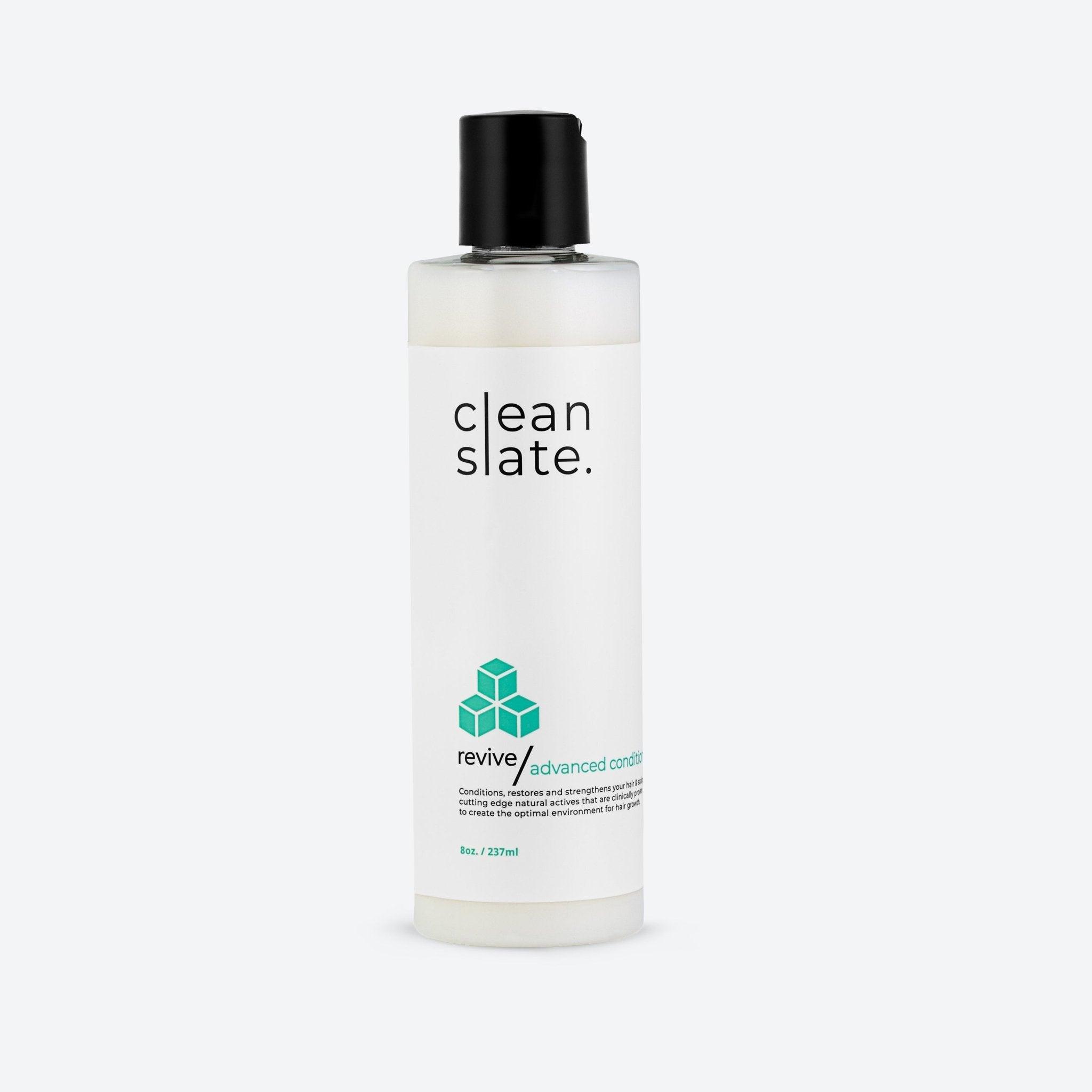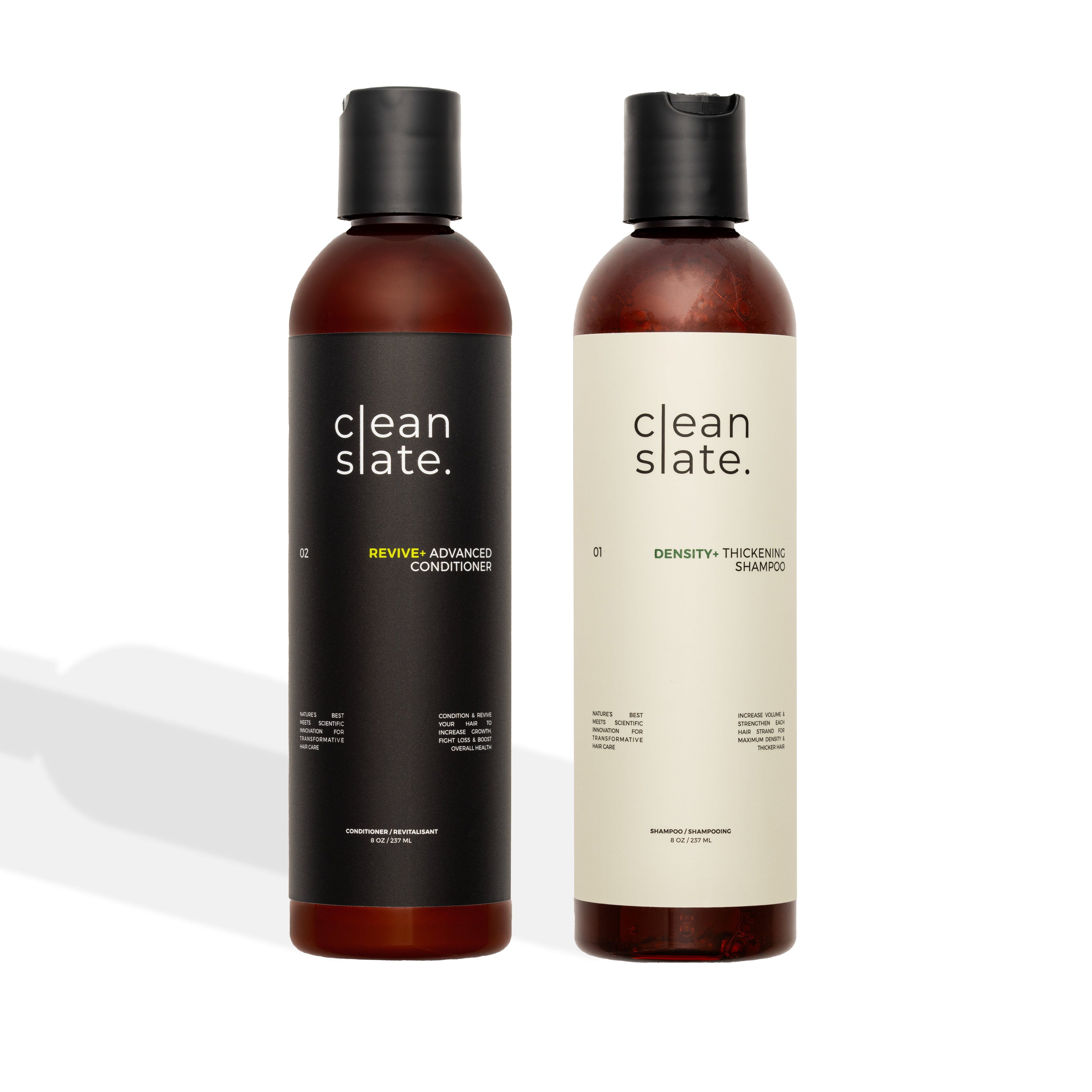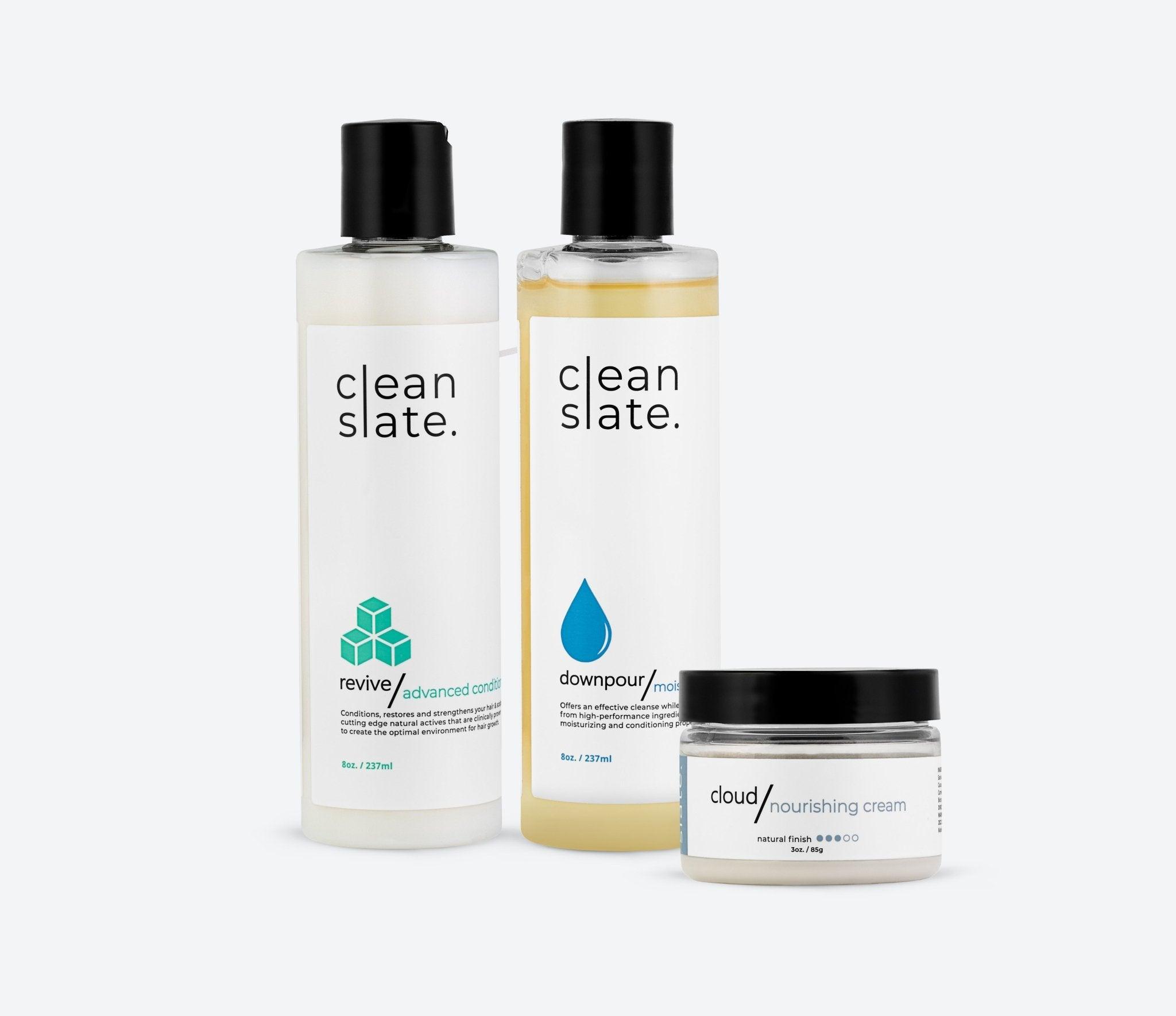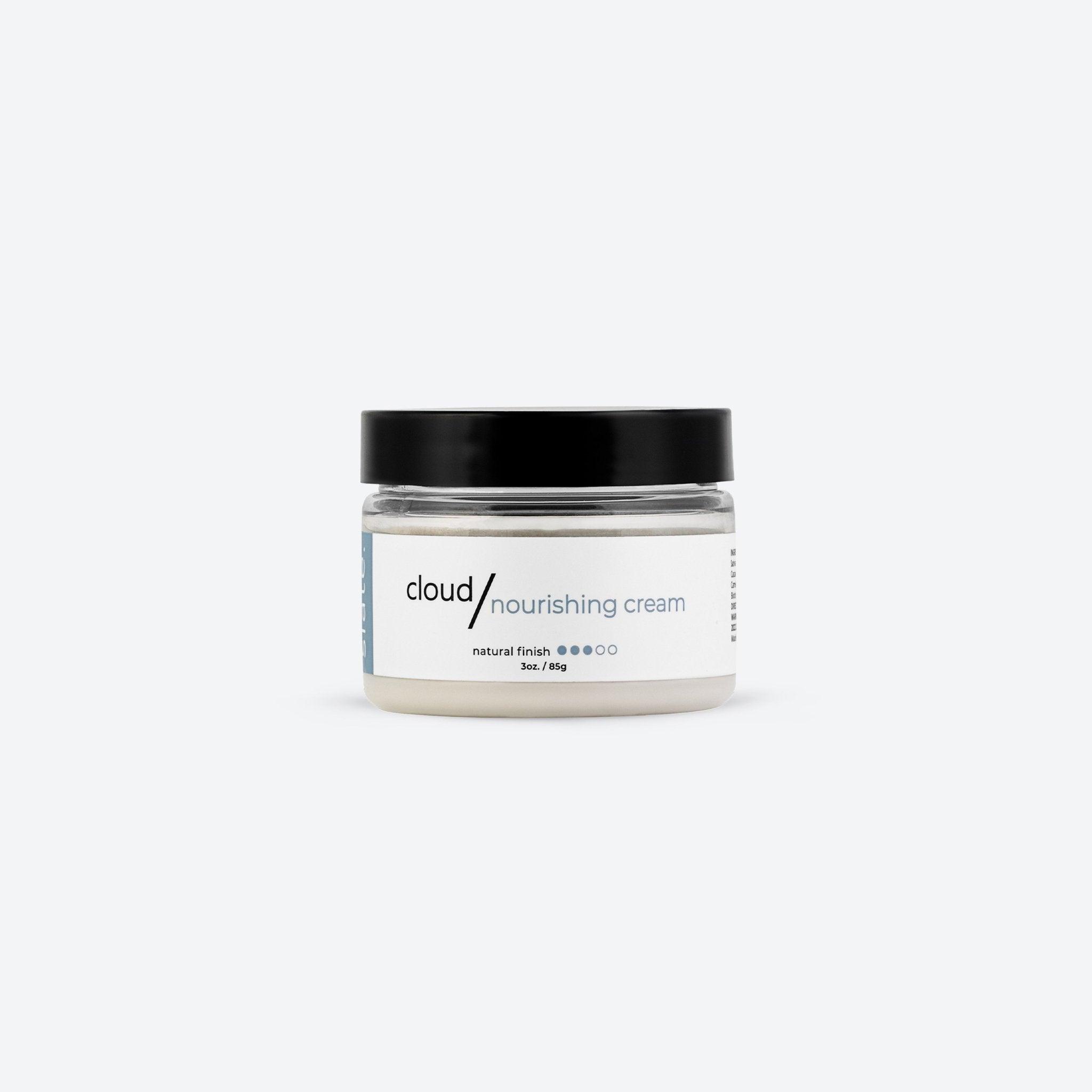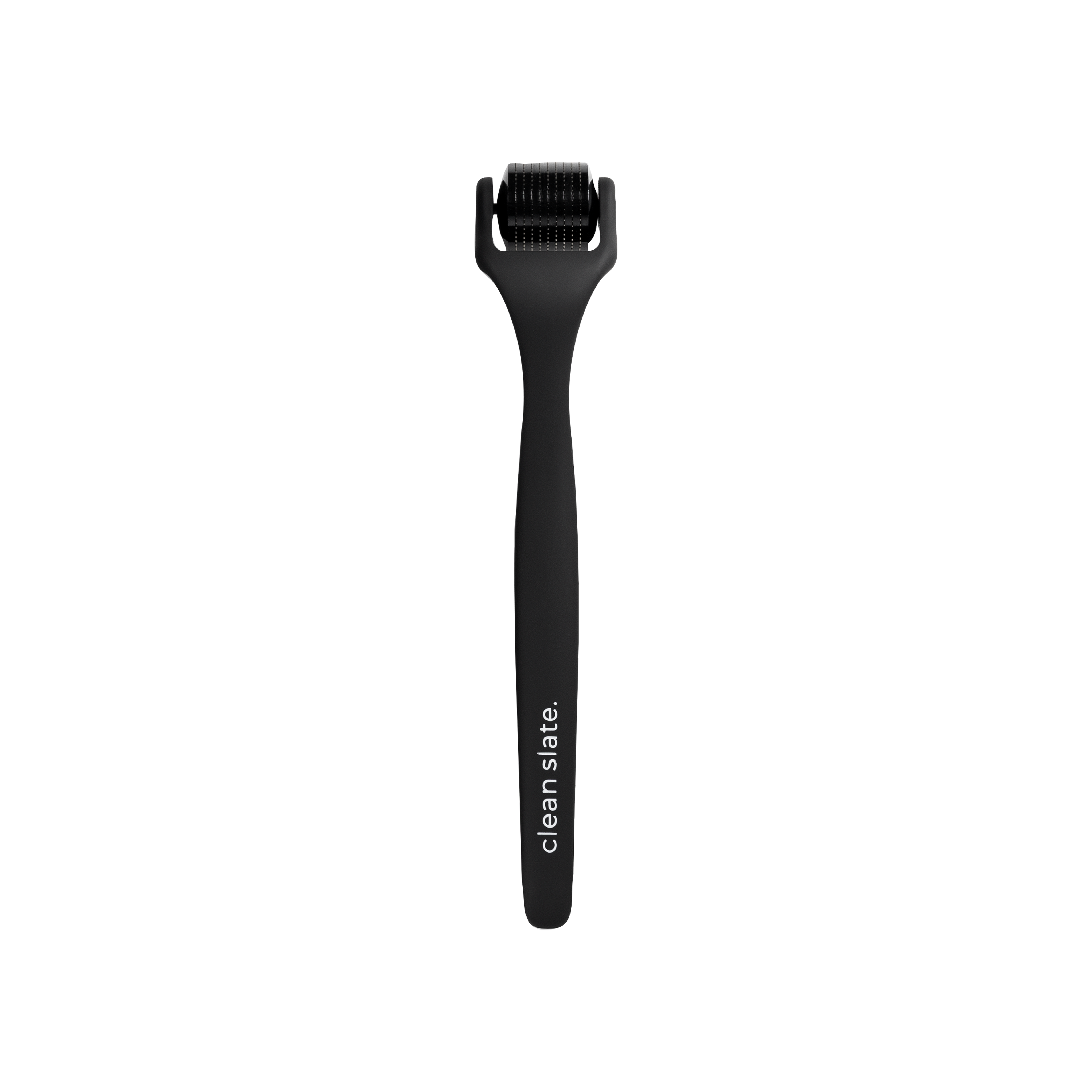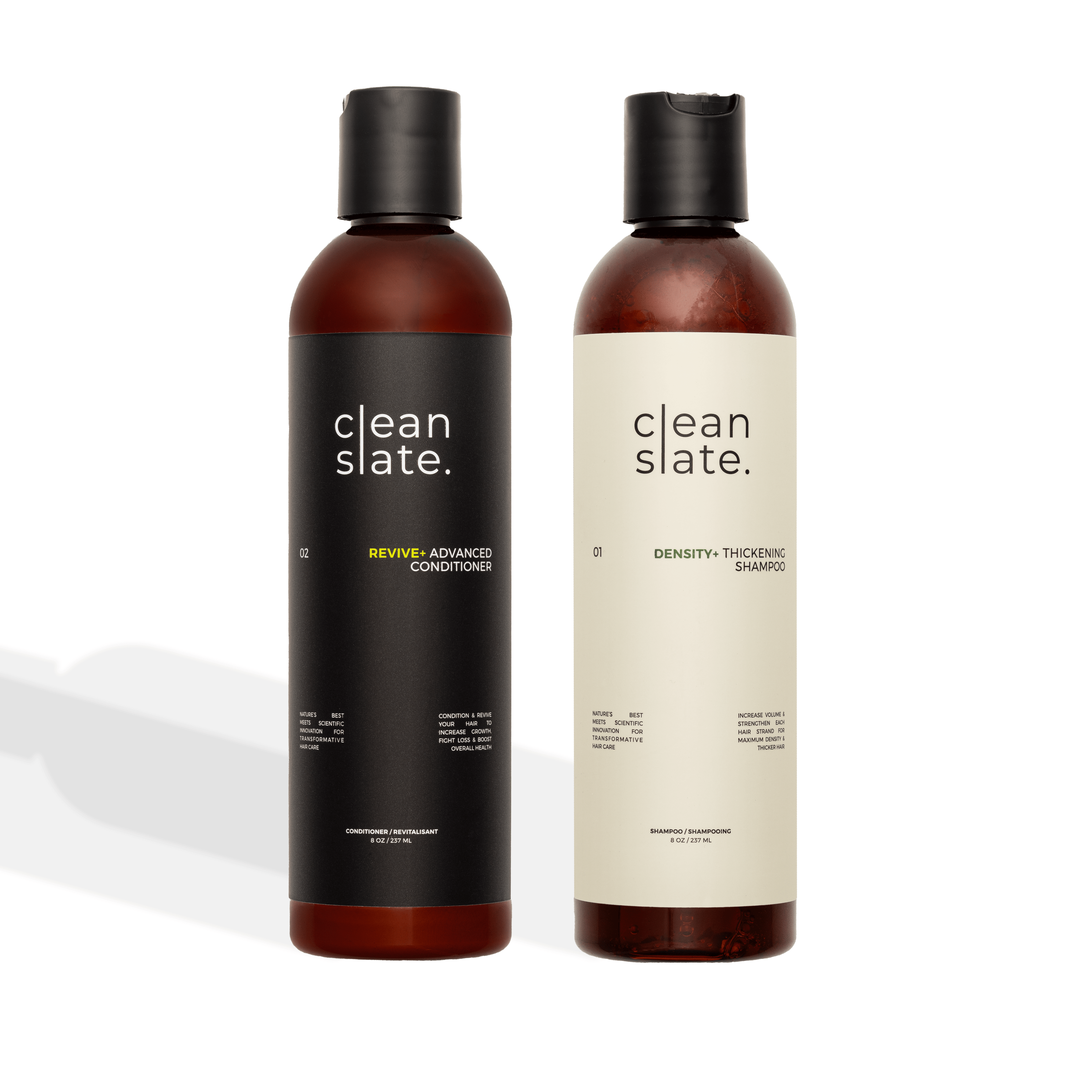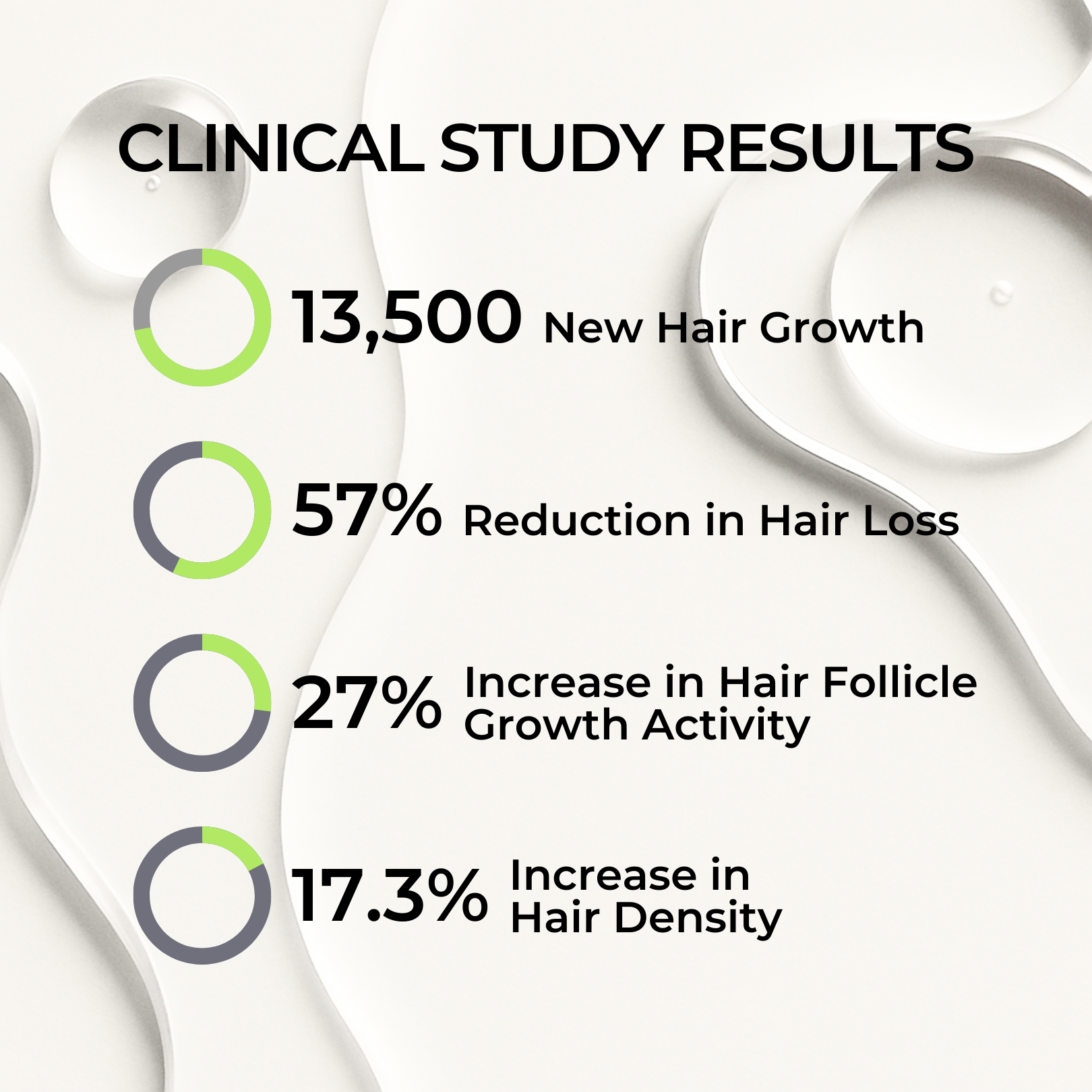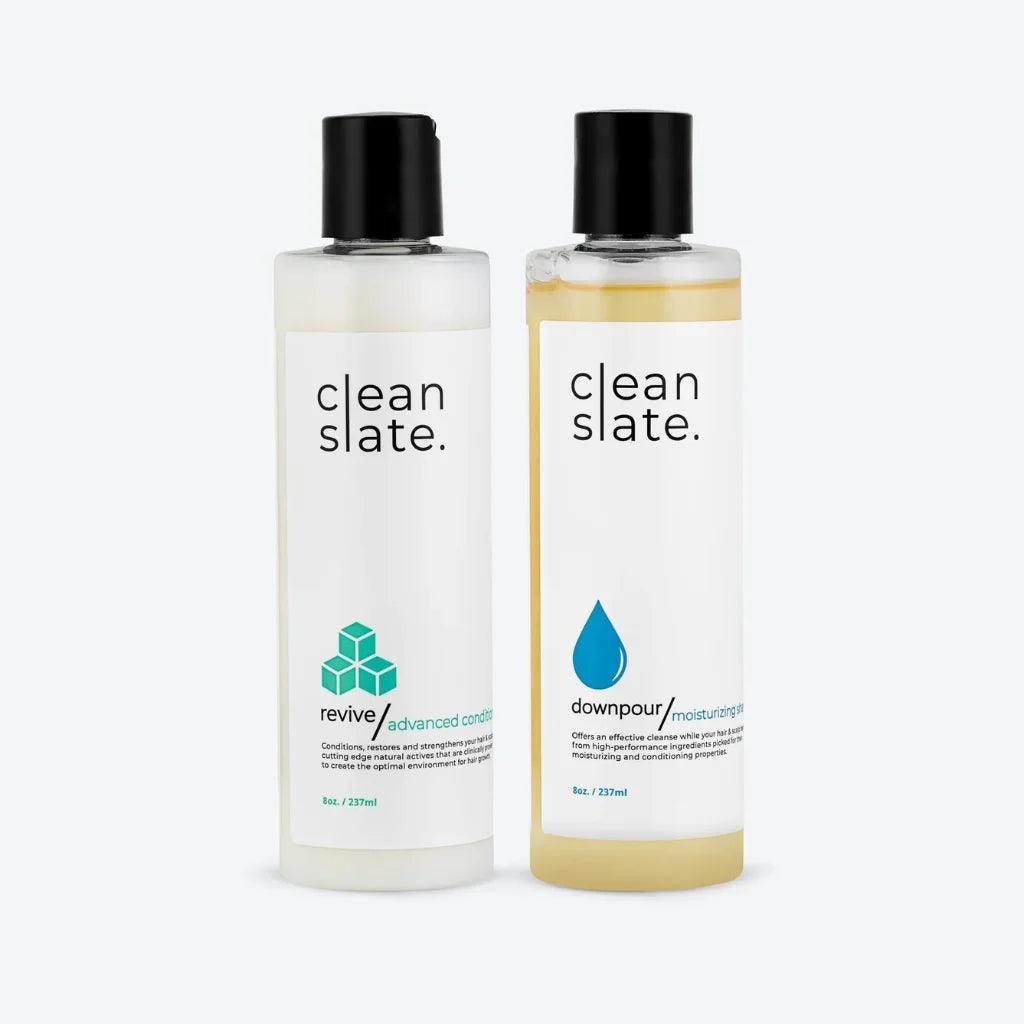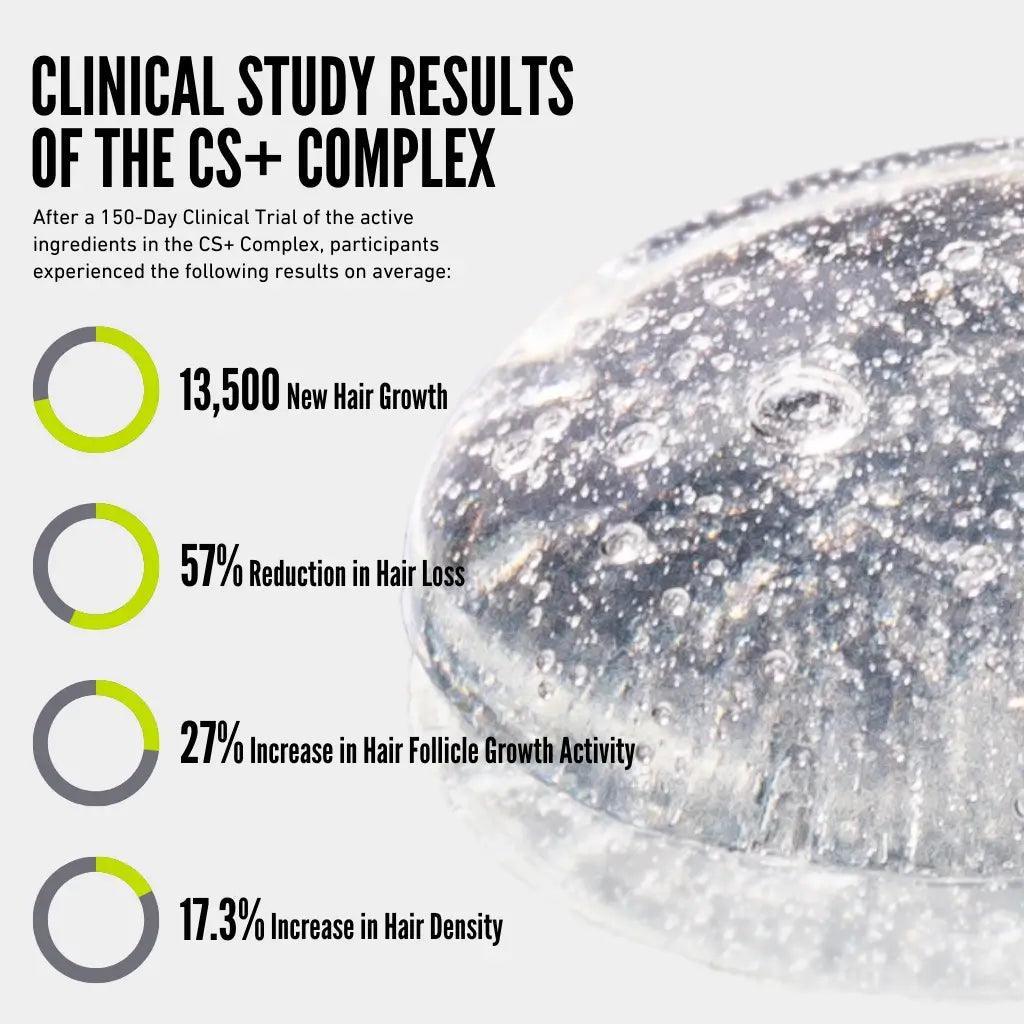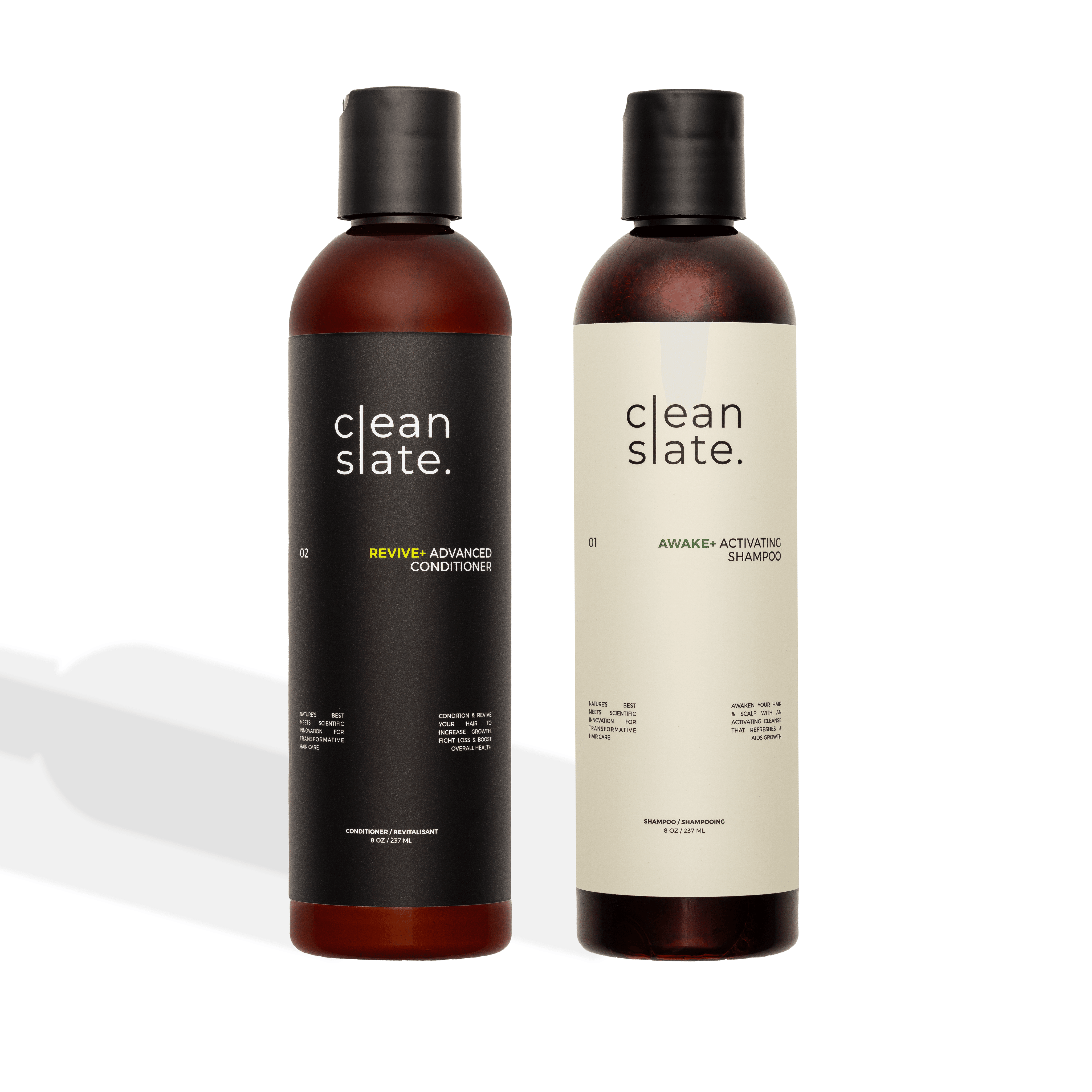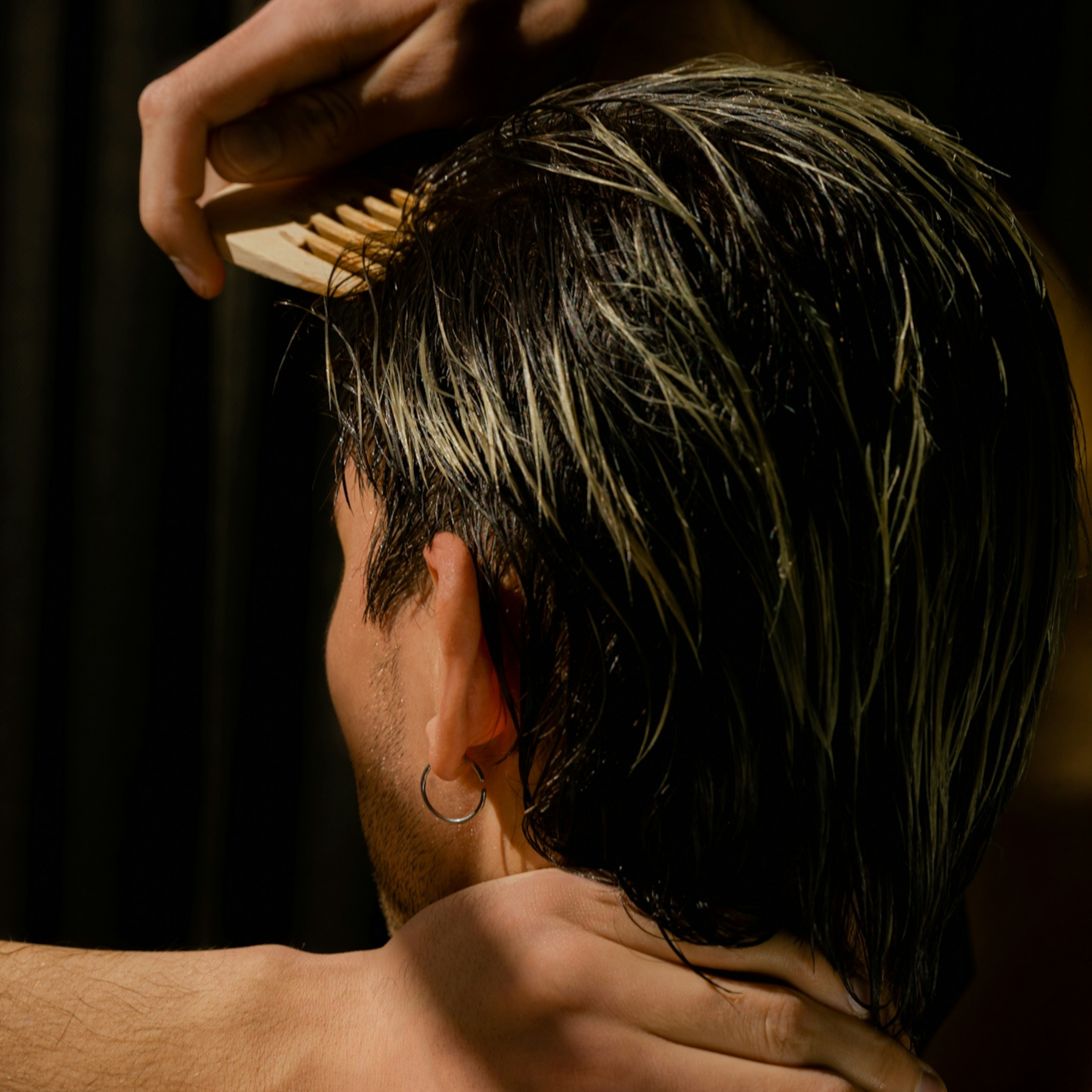The Anatomy of Your Hair: A Guide to the Hair Shaft and Follicle
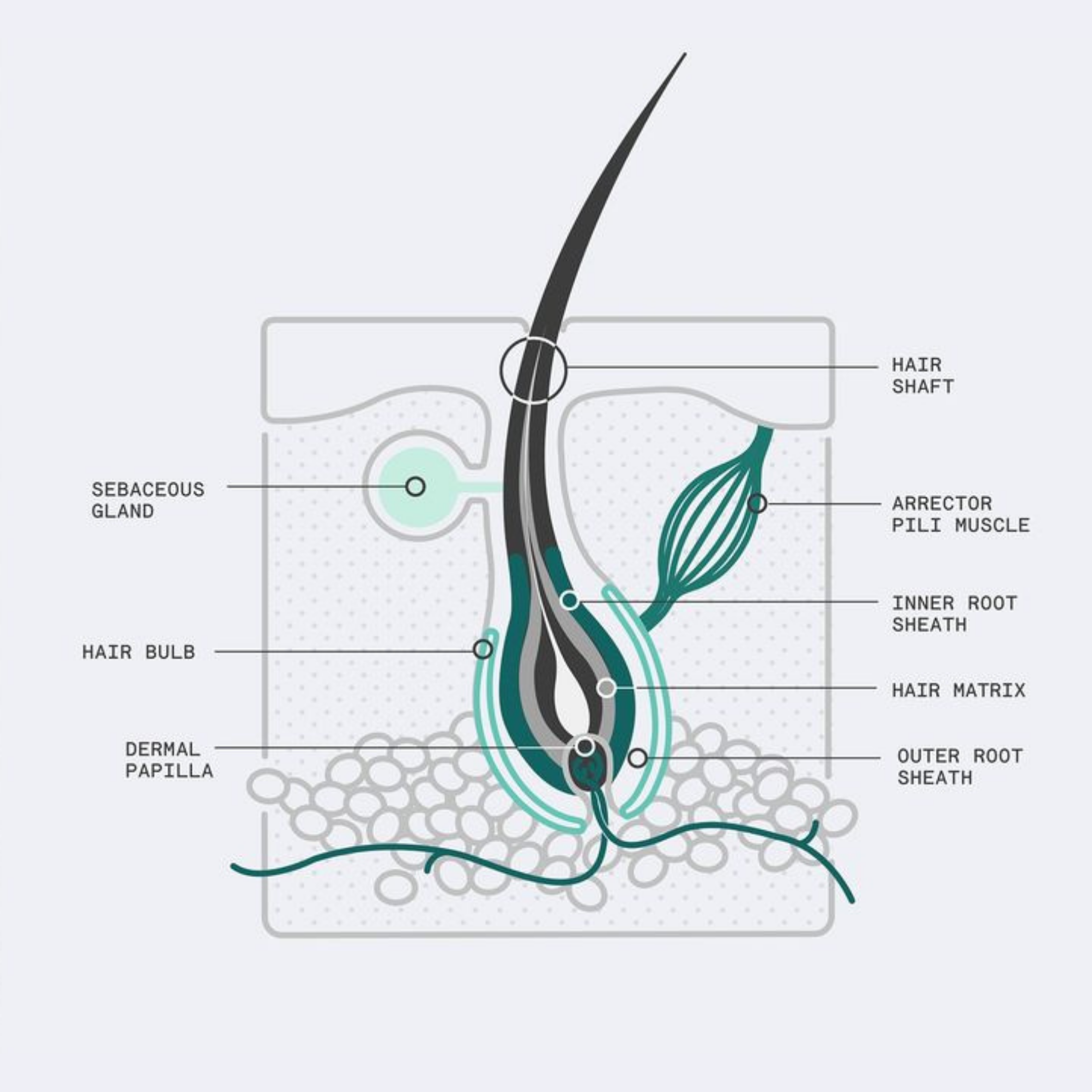
The Anatomy of Your Hair: A Guide to the Hair Shaft and Follicle
When most people think about hair, they picture the strands they can see and touch—the part they style, color, and care for daily. But those visible strands are just the final product of a complex biological system working beneath your scalp's surface.
True hair health—and the key to addressing hair loss—starts with understanding what's happening below the skin. Every strand you see is produced by an intricate network of structures working together: nutrient-supplying blood vessels, cell-generating matrices, protective sheaths, and oil-producing glands. When this system functions optimally, you get thick, strong, healthy hair. When any part falters, you see thinning, breakage, or loss.
At Clean Slate Care, we design our products with this complete biology in mind. Rather than treating hair as a cosmetic concern, we address it as a biological system—supporting every structure from the deepest follicle to the visible shaft. Let's walk through each component and understand how they work together to create the hair you see (or want to see) in the mirror.
The Hair Shaft: What You See Above the Scalp
The hair shaft is the visible part of your hair—the strand extending from your scalp that you wash, style, and sometimes curse when it won't cooperate. While it's technically "dead" tissue (no living cells), its structure determines everything from strength and texture to shine and manageability.
The shaft consists of three distinct layers:
The Cuticle (Outer Layer): Your hair's protective armor. The cuticle is made of overlapping cells that lie flat like roof shingles when healthy. This smooth arrangement reflects light, creating shine, and protects the inner layers from damage. When the cuticle is damaged—from heat styling, chemical treatments, or environmental stress—those cells lift and roughen, causing dullness, tangles, and breakage.
The Cortex (Middle Layer): The structural core that gives hair its strength, elasticity, and color. The cortex contains keratin proteins and melanin pigments arranged in long, fibrous chains. This is where the actual strength of your hair comes from—thick cortex = strong hair, thin cortex = fragile hair. Damage to the cortex (from bleaching, excessive heat, or harsh chemicals) causes permanent structural weakness.
The Medulla (Inner Core): The innermost layer, present primarily in thick, coarse hair. Fine hair often lacks a medulla entirely. Its exact function isn't fully understood, but it contributes to the overall diameter and texture of the strand.
Why This Matters: Even the healthiest follicle can't produce strong, beautiful hair if the shaft is damaged by harsh products or styling. That's why comprehensive hair care addresses both follicular health (where growth happens) and shaft protection (maintaining what you grow). Our Revive+ Conditioner delivers strengthening proteins and protective compounds that reinforce the cortex and smooth the cuticle, ensuring the hair your follicles produce stays strong and intact.
The Dermal Papilla: The Command Center for Growth
If your hair follicle were a factory, the dermal papilla would be the CEO—the command center that controls whether hair grows, how fast it grows, and how thick it becomes.
What It Is: The dermal papilla is a small, cone-shaped cluster of cells and blood vessels located at the very base of your hair follicle. It's embedded in the dermal layer of your skin, surrounded by the hair bulb (which we'll discuss next).
What It Does: The dermal papilla serves two critical functions:
- Nutrient Delivery: It's the primary blood supply to your hair follicle, delivering oxygen, vitamins, minerals, and amino acids that follicular cells need to divide and produce hair. Poor circulation to the dermal papilla means malnourished follicles and weak, slow growth.
- Growth Signaling: The dermal papilla sends chemical signals that tell stem cells in the hair bulb when to start producing new hair, how long to keep growing, and when to stop. It essentially controls the hair growth cycle—keeping follicles in the anagen (growth) phase or allowing them to slip into telogen (resting).
Why It Matters: When dermal papilla function declines—due to inflammation, poor circulation, or disrupted signaling—hair growth slows or stops entirely. This is why treatments that improve blood flow and reduce inflammation can reactivate struggling follicles.
The Clean Slate Connection: Our BioActivate Formula includes Capilia Longa™, which reduces the chronic inflammation that interferes with dermal papilla signaling. By creating an anti-inflammatory environment, we help the dermal papilla maintain clear communication with follicular stem cells—keeping growth cycles active and productive. Think of it as clearing the static from a radio signal so the message comes through loud and clear.
Give your follicles the support they need at the cellular level. Clean Slate's BioActivate+ Serum delivers growth activators directly to the dermal papilla, optimizing nutrient delivery and follicular signaling for measurable results. Start your 150-day journey →
The Hair Matrix: Where Growth Actually Happens
The hair matrix is where the magic happens—the cellular factory that produces every strand of hair on your head.
What It Is: The matrix is a cluster of rapidly dividing cells located just above the dermal papilla, within the hair bulb. These are some of the fastest-dividing cells in your entire body, second only to bone marrow cells.
What It Does: Matrix cells receive signals and nutrients from the dermal papilla and use them to generate new hair cells at an incredible rate. As these cells divide and multiply, they push upward, forming the hair shaft. The cells harden (a process called keratinization) as they move away from their blood supply, eventually becoming the tough, protein-rich strand you see above your scalp.
The matrix also contains melanocytes—specialized cells that produce melanin pigment, giving your hair its color. When melanocyte activity declines, you get gray hair.
Why It Matters: The health and activity level of your hair matrix directly determines:
- Growth rate: How quickly new hair is produced
- Hair thickness: The diameter of the shaft being generated
- Density: How many follicles are actively producing hair at any given time
When the matrix receives poor signaling from the dermal papilla, inadequate nutrients, or is damaged by inflammation or hormonal disruption (like DHT), cell division slows. This results in thinner, weaker hair or follicles that stop producing altogether.
The Clean Slate Connection: Our BioActivate+ Formula includes growth activators that energize matrix cell division. Elaya Renova™, a bioengineered peptide complex, has been shown in clinical studies to increase the rate of cell proliferation in the matrix while simultaneously improving the structural quality of the keratin being produced. Translation: faster growth of thicker, stronger hair.
The Hair Bulb: The Foundation of Every Strand
The hair bulb is the rounded, bulb-shaped base of your hair follicle that houses both the matrix and surrounds the dermal papilla. If the matrix is the factory floor, the bulb is the entire facility.
What It Is: The bulb is the expanded portion at the bottom of your follicle where active growth occurs. It contains the matrix cells we just discussed, along with stem cells that can differentiate into various cell types needed for hair production.
What It Does: The bulb serves as the growth hub—the protected environment where stem cells receive signals, nutrients flow in from the dermal papilla, and matrix cells divide to create new hair. It's the most metabolically active part of your follicle, requiring enormous amounts of energy and resources.
Why It's Vulnerable: The hair bulb is particularly sensitive to:
- DHT (Dihydrotestosterone): This hormone binds to receptors in the bulb, gradually shrinking the follicle and weakening its ability to produce thick hair. This is the primary mechanism behind pattern hair loss.
- Inflammation: Chronic scalp inflammation damages bulb cells and disrupts the growth cycle.
- Nutritional deficiencies: The bulb's rapid cell division requires adequate protein, vitamins, and minerals. Deficiencies directly impact hair quality and growth rate.
- Stress: Elevated cortisol can push bulbs prematurely into the resting phase, causing sudden shedding.
The Clean Slate Connection: Our formula includes natural DHT regulators that work at the scalp level to protect the hair bulb from hormone-driven miniaturization. Unlike oral DHT blockers (like finasteride) that affect your entire body's hormone balance, our topical approach targets only the vulnerable follicles—giving you protection without systemic side effects. By shielding the bulb from DHT damage, we preserve its ability to produce thick, healthy hair indefinitely.
The Outer Root Sheath: Your Hair's Protective Casing
Think of the outer root sheath as the scaffolding that guides and protects your hair as it grows from deep within the follicle to the surface of your scalp.
What It Is: The outer root sheath is a layer of epithelial cells that lines the entire length of your hair follicle, from the bulb at the base to the opening at your scalp's surface. It's continuous with the outer layer of your skin (the epidermis).
What It Does: The outer root sheath serves several crucial functions:
- Structural support: It provides the architectural framework that keeps the follicle tunnel intact as hair grows through it
- Stem cell reservoir: It contains follicular stem cells that can regenerate damaged follicles and contribute to the growth cycle
- Anchoring: It helps secure the hair shaft within the follicle, preventing premature shedding
A healthy outer root sheath means hair is firmly anchored and protected during growth. When this structure weakens, hair becomes more prone to falling out before completing its natural growth cycle.
The Clean Slate Connection: Elaya Renova™ in our formula strengthens the anchoring proteins within the outer root sheath, improving the structural integrity of the entire follicle. This means the hair you're growing stays firmly rooted longer, contributing to increased overall density. Stronger anchoring also reduces the breakage and premature shedding that can make thinning appear worse than it actually is.
The Inner Root Sheath: Sculpting Your Hair's Shape
While the outer root sheath provides structure, the inner root sheath is responsible for shaping and guiding each individual hair strand as it forms.
What It Is: The inner root sheath is a temporary protective layer that surrounds the growing hair shaft from the bulb to about the level of the sebaceous gland. Unlike the outer sheath, which is permanent, the inner root sheath breaks down and disappears as hair matures.
What It Does: As your hair grows upward from the matrix, the inner root sheath molds it into its final shape and texture. It acts like a custom sleeve that guides the developing strand, ensuring it grows straight and smooth rather than twisted or irregular.
The inner root sheath also protects the developing hair shaft during its most vulnerable early growth stages, before the cuticle fully hardens.
Why It Matters: When the inner root sheath functions properly, you get smooth, even hair growth with consistent texture. When it's compromised—due to nutritional deficiencies, dehydration, or follicular inflammation—hair can emerge uneven, brittle, or prone to breakage.
The Clean Slate Connection: Proper hydration and nutrient delivery to follicular structures ensure the inner root sheath can do its job effectively. Our Revive+ Conditioner delivers deep hydration and structural proteins that support healthy sheath function, resulting in smoother, more resilient hair from the moment it emerges from your scalp.
The Sebaceous Gland: Your Scalp's Natural Moisturizer
Every hair follicle comes with its own built-in moisturizing system—the sebaceous gland.
What It Is: The sebaceous gland is a small, sac-like structure attached to the side of your hair follicle, usually positioned where the inner root sheath ends. It produces sebum, your scalp's natural oil.
What It Does: Sebum serves multiple critical functions:
- Moisture barrier: It coats the hair shaft and scalp surface, preventing excessive water loss and protecting against environmental damage
- Antimicrobial protection: Sebum contains fatty acids that inhibit harmful bacteria and fungi
- pH regulation: It helps maintain your scalp's slightly acidic pH, which is essential for healthy follicle function
- Lubrication: It allows hair to move smoothly through the follicle and prevents the strand from becoming brittle
The Balance Problem: Both too much and too little sebum cause issues:
Overproduction leads to:
- Oily, greasy-looking hair
- Clogged follicles that can trap DHT and inflammatory compounds
- Increased dandruff and scalp irritation
- A breeding ground for bacteria that can damage follicles
Underproduction leads to:
- Dry, brittle hair prone to breakage
- Itchy, flaky scalp
- Loss of protective barrier against environmental damage
- Increased friction that can weaken the hair shaft
The Clean Slate Connection: Our Awake+ and Density+ Shampoos are formulated to clear away excess sebum, product buildup, and trapped DHT without stripping your scalp's natural protective oils. This balanced cleansing approach resets your sebaceous glands to healthy function—producing enough oil to protect and moisturize, but not so much that it clogs follicles or weighs hair down. Our Revive+ Conditioner then delivers additional hydration exactly where it's needed, supporting optimal scalp environment for growth.
How Clean Slate Supports the Entire Hair Growth System
Understanding hair anatomy reveals an important truth: you can't address hair loss or achieve optimal growth by targeting just one structure or mechanism. Hair health depends on the coordinated function of multiple biological systems working together.
That's why we designed our Hair Growth Systems as comprehensive solutions—not a single product, but a complete approach that supports every critical component of the hair growth process.
BioActivate+ Hair Growth Serum: Targeting the Follicle
Our serum delivers growth activators directly to the structures where hair is produced:
For the dermal papilla and hair bulb:
- Capilia Longa™ reduces inflammation that disrupts growth signaling
- Improved nutrient delivery through enhanced follicular circulation
- Natural DHT blockers protect the bulb from hormone-driven miniaturization
For the hair matrix:
- Elaya Renova™ stimulates cell proliferation, increasing the rate and quality of new hair production
- Growth activators extend the anagen (active growth) phase, giving each strand more time to grow before shedding
Clinical results: 13,500 new hairs on average, 57% reduction in shedding, visible density improvements in 89% of participants after 150 days.
Awake+ and Density+ Shampoos: Optimizing the Scalp Environment
Healthy follicles need a healthy scalp foundation:
For the sebaceous glands:
- Gentle cleansing removes excess sebum without triggering overproduction
- Clears away product buildup that can clog follicles and trap DHT
For the follicle opening:
- Removes inflammatory compounds and environmental pollutants
- Creates clean pathways for the serum's growth activators to penetrate
For overall scalp health:
- Maintains optimal pH balance for follicular function
- Reduces irritation that can push follicles into resting phases
Revive+ Conditioner: Protecting and Strengthening
What good is new growth if it breaks before reaching visible length?
For the hair shaft:
- Strengthening proteins reinforce the cortex
- Smoothing compounds seal the cuticle for improved shine and manageability
For the outer root sheath:
- Elaya Renova™ strengthens anchoring proteins, reducing premature shedding
- Improved structural integrity keeps hair firmly rooted
For hydration:
- Deep conditioning supports inner root sheath function
- Prevents the brittleness and breakage that make thinning appear worse
The System Approach: Why It Works Better
Each product addresses different biological structures and mechanisms. Used together, they create optimal conditions at every level:
- The shampoos prepare the scalp, clearing obstacles and creating clean follicular pathways
- The serum delivers growth activators to stimulate production at the source
- The conditioner protects and strengthens what you grow, ensuring it reaches its full potential
This isn't about selling you more products—it's about recognizing that hair growth is a system, not a single process. Supporting the entire anatomy produces dramatically better results than targeting just one piece.
Ready to give your follicles complete support from root to tip?
Explore our Hair Growth Systems and start your 150-day journey to thicker, healthier hair—backed by our money-back guarantee.
Frequently Asked Questions
Which part of the hair grows first?
Hair growth begins at the hair bulb, specifically within the hair matrix where cells rapidly divide. These cells are generated at the base of the follicle, pushed upward as new cells form beneath them, and gradually harden into the hair shaft through keratinization. So technically, the "oldest" part of your visible hair is the tip (which has been growing the longest), while the "newest" part is always at the root, closest to the scalp.
The dermal papilla initiates the entire process by sending growth signals to stem cells in the bulb, triggering matrix cells to start dividing and producing hair.
What does the dermal papilla do?
The dermal papilla serves as the control center and life support system for your hair follicle. It performs two essential functions:
Nutrient supply: It contains blood vessels that deliver oxygen, vitamins, minerals, and amino acids necessary for rapid cell division in the matrix.
Growth regulation: It produces chemical signals (growth factors) that tell follicular stem cells when to activate, how long to keep producing hair, and when to enter resting phases. When dermal papilla function is compromised—through poor circulation, inflammation, or disrupted signaling—hair growth slows or stops entirely.
How do sebaceous glands affect hair growth?
Sebaceous glands don't directly cause hair to grow, but they create the environmental conditions that allow follicles to function optimally. By producing sebum (natural oil), they:
- Maintain moisture balance in the scalp and hair shaft
- Provide antimicrobial protection against bacteria and fungi that can damage follicles
- Help regulate scalp pH for healthy follicular function
Problems arise when sebaceous glands produce too much or too little sebum. Overproduction can clog follicles and trap DHT (contributing to hair loss), while underproduction leads to dry, brittle hair prone to breakage. The goal is balanced sebum production—enough to protect, not so much that it obstructs.
Understanding the System Changes Everything
Healthy hair isn't about miracle ingredients or overnight transformations. It's about understanding the biology and supporting every structure from the deepest follicle to the visible strand.
When you know that the dermal papilla needs clear signaling, that the matrix requires activated growth factors, that the bulb must be protected from DHT, that the sebaceous glands need balance, and that the shaft requires structural support—suddenly, comprehensive care makes perfect sense.
That's the philosophy behind Clean Slate Care: science-backed products designed to work with your hair's natural biology, supporting the entire system for sustainable, measurable results.
Start supporting your hair's complete anatomy today.
Explore our Hair Growth Systems and give your follicles everything they need to produce the thick, healthy hair you deserve—backed by our 150-Day Money-Back Guarantee.
Your hair's potential is written in its anatomy. We're here to help you unlock it.

